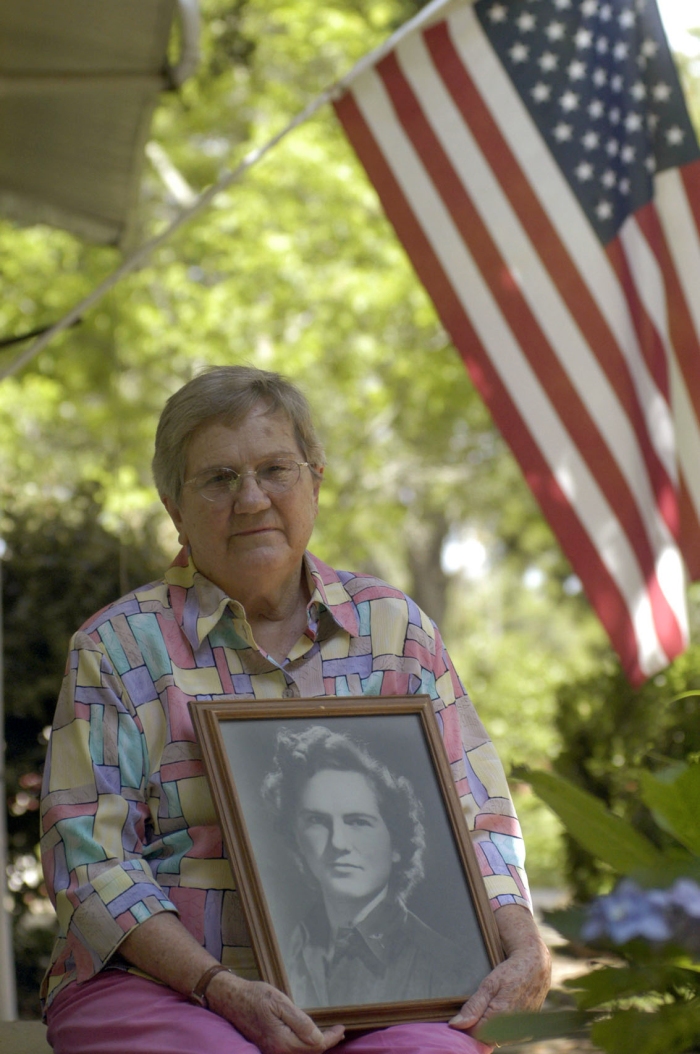 Don Menard shows a letter and gifts he received in 2004 from Vasily Bezugly, a Soviet soldier who helped liberate Menard at Stalag Luft 1 near the end of World War II in Europe. (Photo used by permission of The Advocate, Baton Rouge, Louisiana.)
Don Menard shows a letter and gifts he received in 2004 from Vasily Bezugly, a Soviet soldier who helped liberate Menard at Stalag Luft 1 near the end of World War II in Europe. (Photo used by permission of The Advocate, Baton Rouge, Louisiana.)
By George Morris
After leaving a prisoner of war camp near the end of World War II, Don Menard never expected he’d get to know any of the Soviet soldiers who liberated him.
Yet, several years, that is exactly what he was able to do.
In 2001, Menard began corresponding with Vasily Bezugly, part of the Soviet force that liberated Stalag Luft 1 in Barth, Germany, on May 2, 1945, just days before Germany’s surrender ended the war.
Continue reading “Over half-century later, POW corresponds with liberator”
 American Waco CG-4A glider being towed in flight (National Archives)
American Waco CG-4A glider being towed in flight (National Archives) Marion Matherne holds photos of himself (lower right) and his six brothers, all of whom served in the military in World War II. (Photo by Travis Spradling, used by permission of The Advocate, Baton Rouge, Louisiana.)
Marion Matherne holds photos of himself (lower right) and his six brothers, all of whom served in the military in World War II. (Photo by Travis Spradling, used by permission of The Advocate, Baton Rouge, Louisiana.) Anderson Wilson served in the ‘Ghost Army’ that tricked German soldiers into believing the U.S. Army had significant forces in areas that were lightly defended. (Photo by Scott Threlkeld, used by permission of The Advocate, Baton Rouge, Louisiana)
Anderson Wilson served in the ‘Ghost Army’ that tricked German soldiers into believing the U.S. Army had significant forces in areas that were lightly defended. (Photo by Scott Threlkeld, used by permission of The Advocate, Baton Rouge, Louisiana) Irma Darphin served as a nurse in Europe after the Normandy Invasion. (Photo used by permission of The Advocate, Baton Rouge, Louisiana.)
Irma Darphin served as a nurse in Europe after the Normandy Invasion. (Photo used by permission of The Advocate, Baton Rouge, Louisiana.) Lenton Sartain, part of the 82nd Airborne Division’s 319th Glider Field Artiller Battalion (Photo by Patrick Dennis, used by permission of The Advocate, Baton Rouge, Louisiana)
Lenton Sartain, part of the 82nd Airborne Division’s 319th Glider Field Artiller Battalion (Photo by Patrick Dennis, used by permission of The Advocate, Baton Rouge, Louisiana) Nolan Ruiz, left, and Mervin Medine knew each other in elementary school, and it was Medine’s unit that liberated Ruiz from captivity near the end of World War II. (Photo by Travis Spradling, used by permission of The Advocate, Baton Rouge, Louisiana)
Nolan Ruiz, left, and Mervin Medine knew each other in elementary school, and it was Medine’s unit that liberated Ruiz from captivity near the end of World War II. (Photo by Travis Spradling, used by permission of The Advocate, Baton Rouge, Louisiana)
 Robert Black fought with the 10th Mountain Division in Italy. (Photo by Bill Feig, used by permission of The Advocate, Baton Rouge, Louisiana)
Robert Black fought with the 10th Mountain Division in Italy. (Photo by Bill Feig, used by permission of The Advocate, Baton Rouge, Louisiana) Tom Grace was part of an Army Ranger unit that liberated more than 500 prisoners from Cabanatuan, Philippines. (Photo by Patrick Dennis, used by permission of The Advocate, Baton Rouge, Louisiana)
Tom Grace was part of an Army Ranger unit that liberated more than 500 prisoners from Cabanatuan, Philippines. (Photo by Patrick Dennis, used by permission of The Advocate, Baton Rouge, Louisiana)